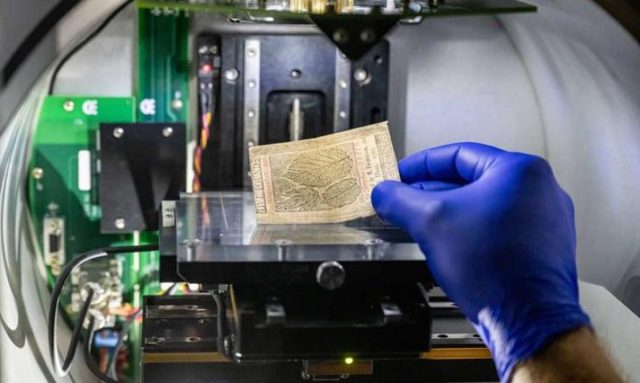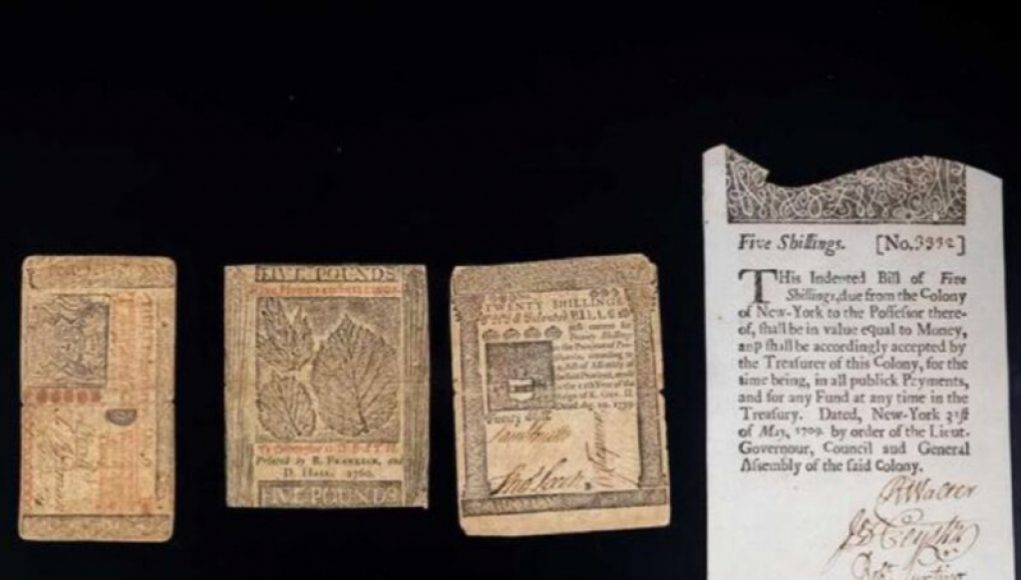A fascinating discovery has shed new light on Benjamin Franklin’s role in currency innovation. While a papermaker in Massachusetts is traditionally credited with introducing fibers into paper currency in 1844, scientists at the University of Notre Dame have found evidence that Franklin was incorporating colored fibers into his own printed currency much earlier. This groundbreaking research, published in the journal Proceedings of the National Academy of Sciences (PNAS), reveals the extent of Franklin’s ingenuity.
In 2021, Notre Dame nuclear physicist Michael Wiescher presented his group’s initial findings on Franklin’s currency innovations. The recently published paper, co-authored by Wiescher, expands on those findings and includes the colored fiber evidence. It is now clear that Franklin’s contributions to currency design were far ahead of his time.
The use of paper money began in 1690 when the Massachusetts Bay Colony printed currency to pay soldiers. Other colonies followed suit, but there was no standardized system of value. To combat counterfeiters, government printers made indentations in the bills, which could be matched to government records for redemption. However, this method was not without its flaws, as paper currency was easily damaged.
Advertisement
By the age of 23, Franklin had already established himself as a successful newspaper editor and printer. He was a strong advocate for paper currency and provided printing services for various colonies. In 1775, he designed the first currency of the Continental Congress, featuring the 13 colonies as linked rings forming a circle. Franklin’s commitment to financial independence was crucial for the colonies’ political independence.

“Benjamin Franklin saw that the Colonies’ financial independence was necessary for their political independence,” explained co-author Khachatur Manukyan. “To expand their economy, the Colonies needed a sufficient monetary supply, as most of the silver and gold coins were being drained away to pay for imported goods.”
Counterfeiters quickly emerged, prompting Franklin and his network to develop innovative methods to detect fake bills. Some of these techniques are still used today. For example, Franklin intentionally misspelled the name of Pennsylvania on the currency he printed in 1739, creating a trap for counterfeiters who would likely correct the mistake in their forgeries.
Franklin’s meticulous record-keeping reveals his dedication to staying ahead of counterfeiters. He maintained a separate ledger to document his transactions with papermaker Anthony Newhouse, ensuring the confidentiality of his security features. Although this ledger has been lost to history, physicists have used their expertise to partially reconstruct Franklin’s printing decisions and methods.
Recently, in an effort to deter counterfeiting, the United States Mint announced a major currency update: the incorporation of colored fibers into the paper money. The idea, inspired by American inventor and statesman, Benjamin Franklin, is the first major advancement in currency security in almost a century.
Benjamin Franklin, the man who the future currency update is named after, is widely known for his contributions to America’s early foundations. He helped draft the Declaration of Independence, and was one of two people to sign the Treaty of Paris ending the Revolutionary War. His inventions include bifocals, the Franklin stove and the lightning rod.
Franklin’s colorful currency is the first major change to currency paper security since 1910. These colorful fibers, which can be seen only when the money is held up to the light, are microscopically small and colored predominantly in red and blue. When light is shone through an authentic bill, the colored fibers appear in the formation of a starburst, recognizable even when the bill is fold or torn.
The purpose of the colored fibers is to make the effort of counterfeiting more difficult. Counterfeit money is a major issue and colored fibers make the paper currency more difficult to replicate. Counterfeiters typically use cheaper printing techniques and paper than the government, resulting in a higher frequency of fake bills. The colored fibers, however, can be seen when the money is held up to the light, which makes them easily identifiable.
The U.S. Mint’s decision to add colored fibers to paper currency is a welcome update to the traditional design. With the help of Benjamin Franklin, America now has a more secure form of currency that will help keep counterfeiters at bay.




















